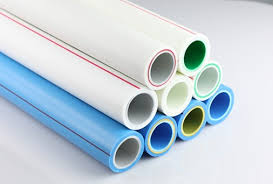Sep . 12, 2024 12:42 Back to list
High-Quality Water Supply Lines Under Kitchen Sink | Durable & Reliable Plumbing Solutions
Understanding Water Supply Lines Under Your Kitchen Sink
When it comes to kitchen plumbing, one of the most critical components is the water supply lines under the sink. These lines play a vital role in delivering fresh water to your faucet and ensuring that your kitchen functions efficiently. Understanding these supply lines can help homeowners troubleshoot issues, perform maintenance, or even undertake minor repairs.
What Are Water Supply Lines?
Water supply lines are typically made from materials such as copper, PEX (cross-linked polyethylene), or PVC (polyvinyl chloride). Each material has its own set of advantages and disadvantages. Copper is durable and resistant to corrosion but can be more challenging to work with due to its rigidity. PEX is flexible and easier to install, making it increasingly popular in modern plumbing. PVC is lightweight and resistant to corrosion but is usually reserved for drainage systems rather than pressurized water lines.
Installation and Configuration
The installation of water supply lines under your kitchen sink typically involves connecting the lines from your home’s water main to the faucet and sometimes to appliances like dishwashers or water filters. The lines are generally connected via compression fittings or braided hoses. Proper installation is crucial to avoid leaks that could lead to significant water damage over time.
In most kitchens, there are two water supply lines one for hot water and one for cold water
. These lines are usually color-coded – red for hot and blue for cold – to prevent confusion during installation or repairs.water supply lines under kitchen sink factory

Common Issues and Troubleshooting
Even the best-installed water supply lines can encounter problems. One of the most common issues is leaking. If you notice water pooling under your sink, the first step is to check the connections. Tightening loose fittings can often resolve minor leaks. However, if the lines themselves are damaged, they may require replacement.
Another issue that homeowners may face is a reduced water flow. This can be caused by a build-up of scale or debris within the lines. Flushing the lines or cleaning the faucet aerator can help restore proper flow. Additionally, regular maintenance is essential. Inspecting the supply lines for signs of wear and tear, especially in older homes, can prevent more severe plumbing issues before they arise.
Upgrading Your Water Supply Lines
If you’re considering a kitchen remodel or simply want to upgrade your plumbing, replacing old supply lines can enhance your kitchen's efficiency. Opting for PEX lines can speed up installation and reduce the risk of leaks. Consulting with a professional plumber can provide insight into the best materials for your specific setup.
Conclusion
Understanding the water supply lines under your kitchen sink is essential for every homeowner. These lines are the backbone of your kitchen's water system, and by being proactive about their maintenance, you can prevent minor issues from becoming expensive repairs. Whether you’re dealing with a small leak or planning a renovation, knowledge about your water supply lines will empower you to make informed decisions about your plumbing needs.
-
High-Quality PVC Borehole Pipes Durable & Versatile Pipe Solutions
NewsJul.08,2025
-
High-Quality PVC Perforated Pipes for Efficient Drainage Leading Manufacturers & Factories
NewsJul.08,2025
-
High-Quality PVC Borehole Pipes Durable Pipe Solutions by Leading Manufacturer
NewsJul.08,2025
-
High-Quality PVC Borehole Pipes Reliable PVC Pipe Manufacturer Solutions
NewsJul.07,2025
-
High-Quality UPVC Drain Pipes Durable HDPE & Drain Pipe Solutions
NewsJul.07,2025
-
High-Quality Conduit Pipes & HDPE Conduit Fittings Manufacturer Reliable Factory Supply
NewsJul.06,2025

